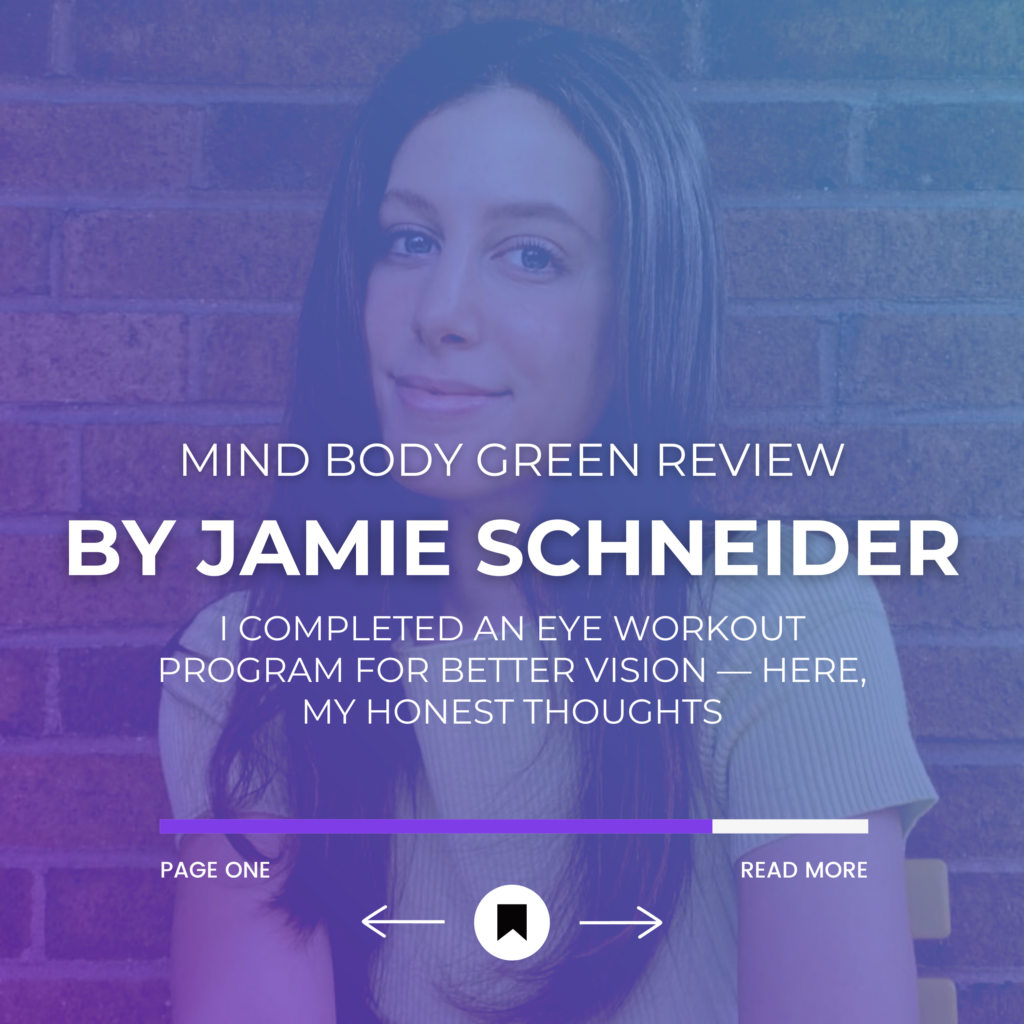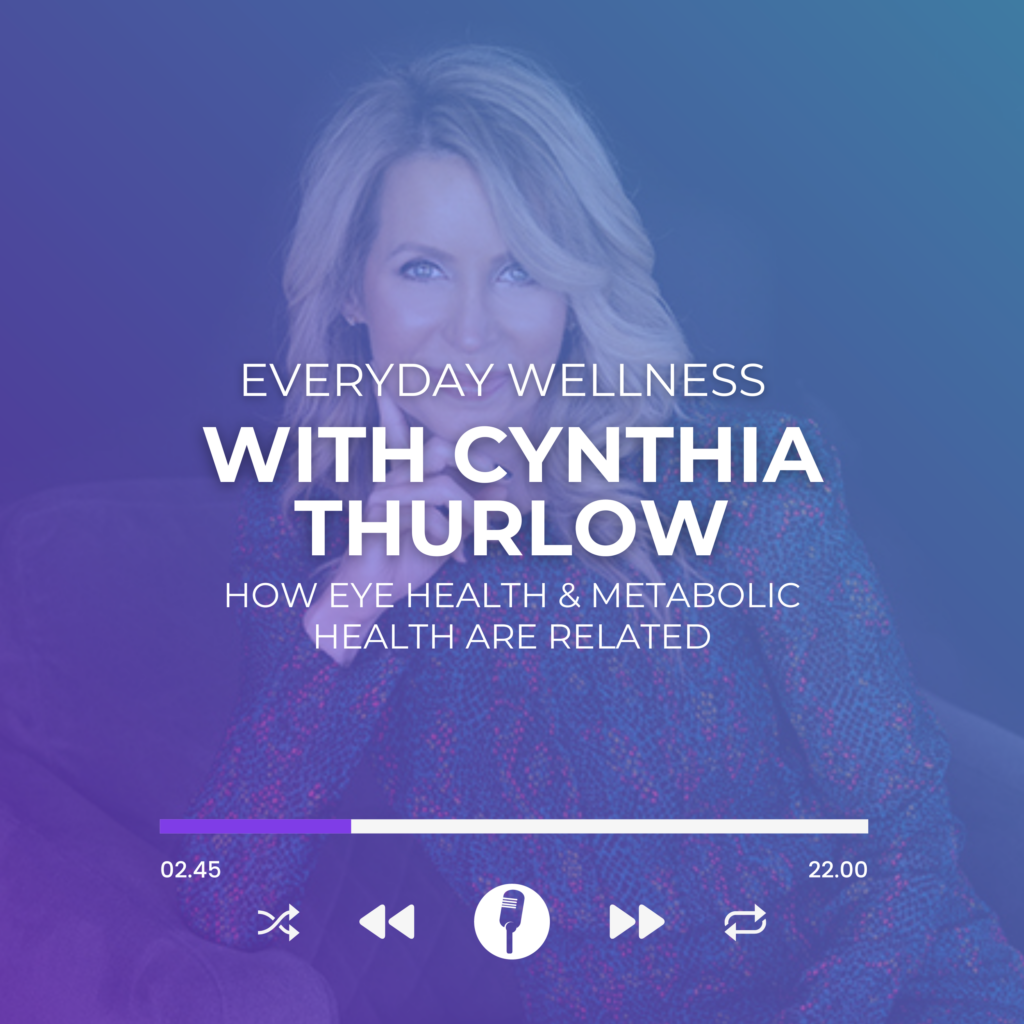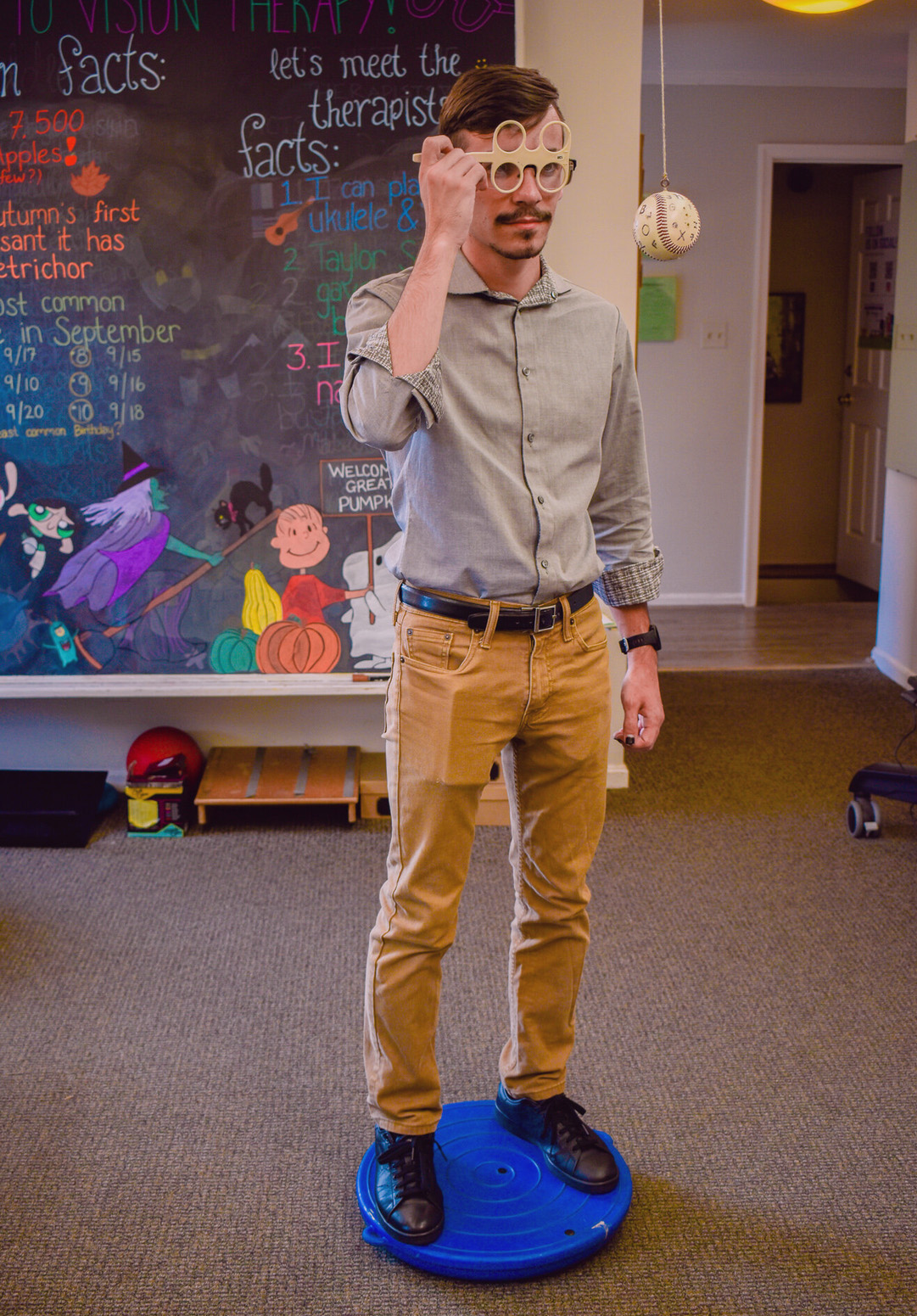Mind Body Green: Jason Wachob Interview - How vision can help anxiety, motion sickness, & more
Your vision and brain health are more connected than you think. Just ask board-certified optometrist Bryce Appelbaum, O.D., FCOVD: ”If one has trouble focusing their eyes, they’re going to have that much more trouble focusing their mind,” he says on this episode of the mindbodygreen podcast.
But eye health affects more than your ability to focus. According to Appelbaum, certain vision hacks can actually reduce anxiety and provide in-the-moment stress relief. Sure, you can always opt for an eye health supplement for vision performance and overall eye longevity, but you might also want to add these exercises to your weekly routine. Perform them for 10 to 15 minutes at least five times a week, says Appelbaum, and you can easily strengthen your orbs and balance your mood
In the epsiode:
Bryce, a board-certified optometrist, joins mbg co-CEO, Jason Wachob, to discuss how to actually strengthen and protect your vision (way beyond blue light blockers), plus:
- Bryce’s background in vision therapy (~00:28)
- How vision impacts physical performance (~04:54)
- The difference between vision & eyesight (~07:06)
- The link between vision health & ADHD diagnoses (~11:28)
- Why you should engage in vision breaks (~17:22)
- How to protect your vision during the workday (~20:59)
- How to use lighting & posture to enhance your vision (~25:09)
- How to implement the 20-20-20 rule into your every day (~29:13)
- Sneaky signs you may have an eyesight issue (~35:44)
- Why some people aren’t the best at eye contact (~40:58)
- Vision exercises for reducing anxiety (~45:08)
- How often you should perform vision exercises (~51:22)
- The relationship between fitness, nutrition & vision health (~55:10)
- How to activate your vestibular system & overcome motion sickness (~01:00:29)
- How much natural light you need for optimal vision health (~01:03:41)
- The role of vision therapy in concussion recovery (~01:06:53)
- One thing you should do every day for better vision (~01:09:38)
Try these exercises for yourself
Essentially, “tromboning” means focusing in and out on a certain object (sort of like how a trombone slides forward and backward). Not only does this practice help strengthen your eye muscles—it’s like “pushups” for the focusing system, Appelbaum says—but it also heightens your sense of peripheral awareness, which is great for quelling anxiety.
“When we feel claustrophobic and we feel our body’s reaction to stress and we tense up, a lot can be done with relaxing focus, opening up periphery, and shifting how we are taking in that experience,” he adds. Think about it: With anxiety, many of us experience “tunnel vision” and lose peripheral awareness. When you have the ability to zoom out, it can almost “trick” your brain into relieving that anxiety.
But back to the tromboning practice: “Take a target up close with small letters on it, bring it as close as [you] can until it gets a little blurry. Stop, try and make it clear, and then bring it backward,” says Appelbaum. “You’re almost tromboning that zone. The more you practice that, the closer you’ll be able to get that image.” Feel free to start with one eye covered and alternate, if that’s easier.
Palming is actually a yogic exercise that has been around for hundreds of years, says Appelbaum. The key is to relax the muscles around the eyes, which reduces eye strain and provides an instant sense of comfort. To start, “rub your hands together to create a lot of heat. Then, ideally near a desk, close your eyes, put your hands over your eyes, block out any of the light that’s there, and the warmth and the relaxation almost acts like a meditation for the eyes,” he says.
It’s great if you need a quick moment of pause during a busy workday—just don’t forget to breathe deeply while you relax.
Your eyes contain teeny-tiny muscles, and you can help strengthen them, just as you might perform bicep curls to work your arm muscles. “Our muscles get tense, and life is tense. So often vision and adaptations that occur are in response to this stress,” Appelbaum notes.
But because the eye muscles are so delicate, they don’t require a ton of training. Simply follow his instructions below:
- Cover up one eye, and look as far up to the ceiling as you can. Hold it for 10 seconds before relaxing.
- Then look as far down to the floor as you can. Hold it for 10 seconds before relaxing.
- Repeat these steps by looking to the left, right, and diagonally. Then cover the other eye and repeat.
The takeaway.
Even if you don’t have any known eye issues, these exercises can help strengthen your orbs in the long run—and provide some in-the-moment anxiety relief. In short? Anyone can benefit from adding these to their routine. “For many people, being mindful and doing these practices can help some, and for others help dramatically,” Appelbaum says. Of course, some people may need more tailored treatments if they’re dealing with a certain eye health issue. “That’s where specialists who are board-certified in vision therapy come into play,” he adds.




